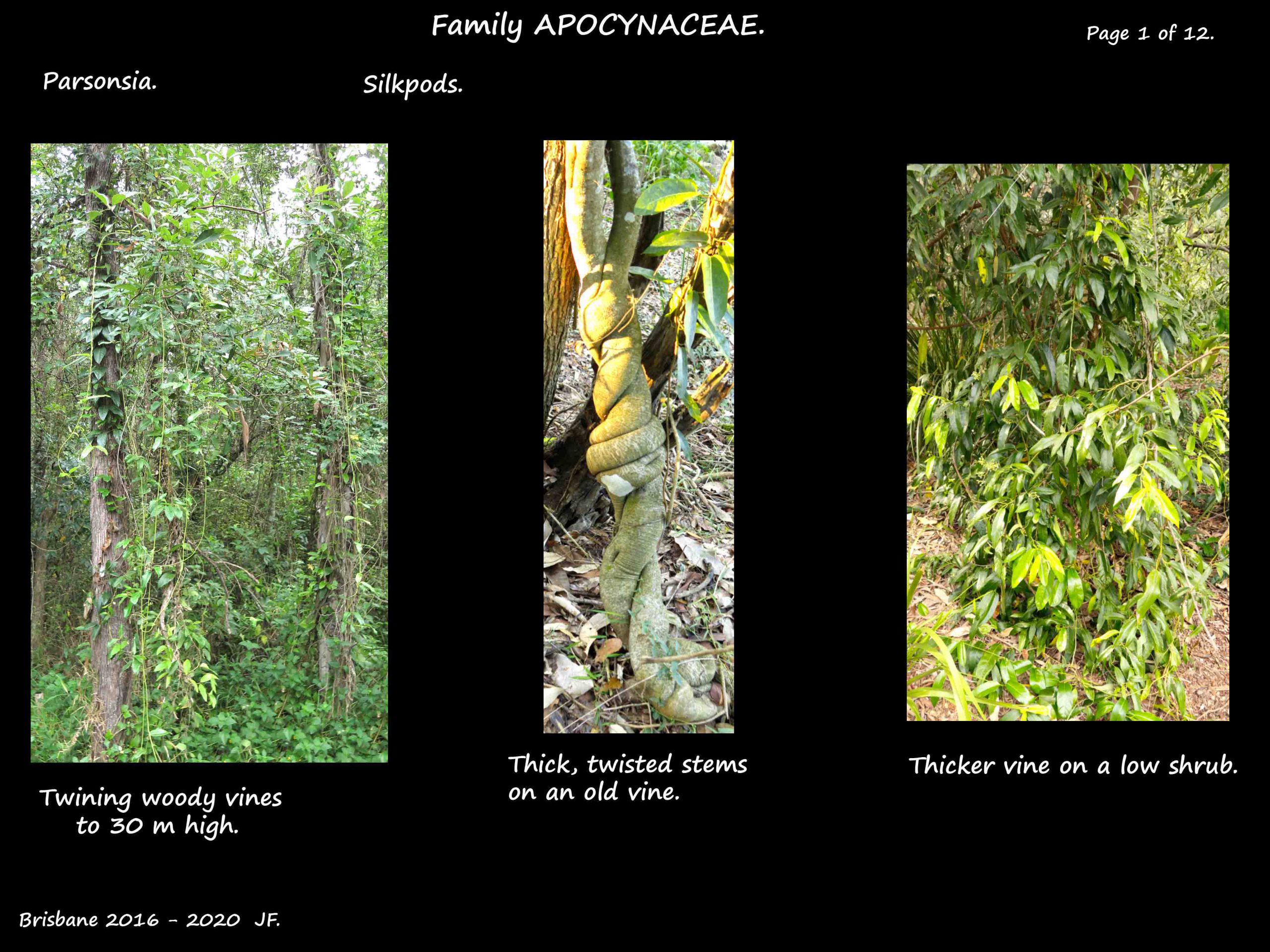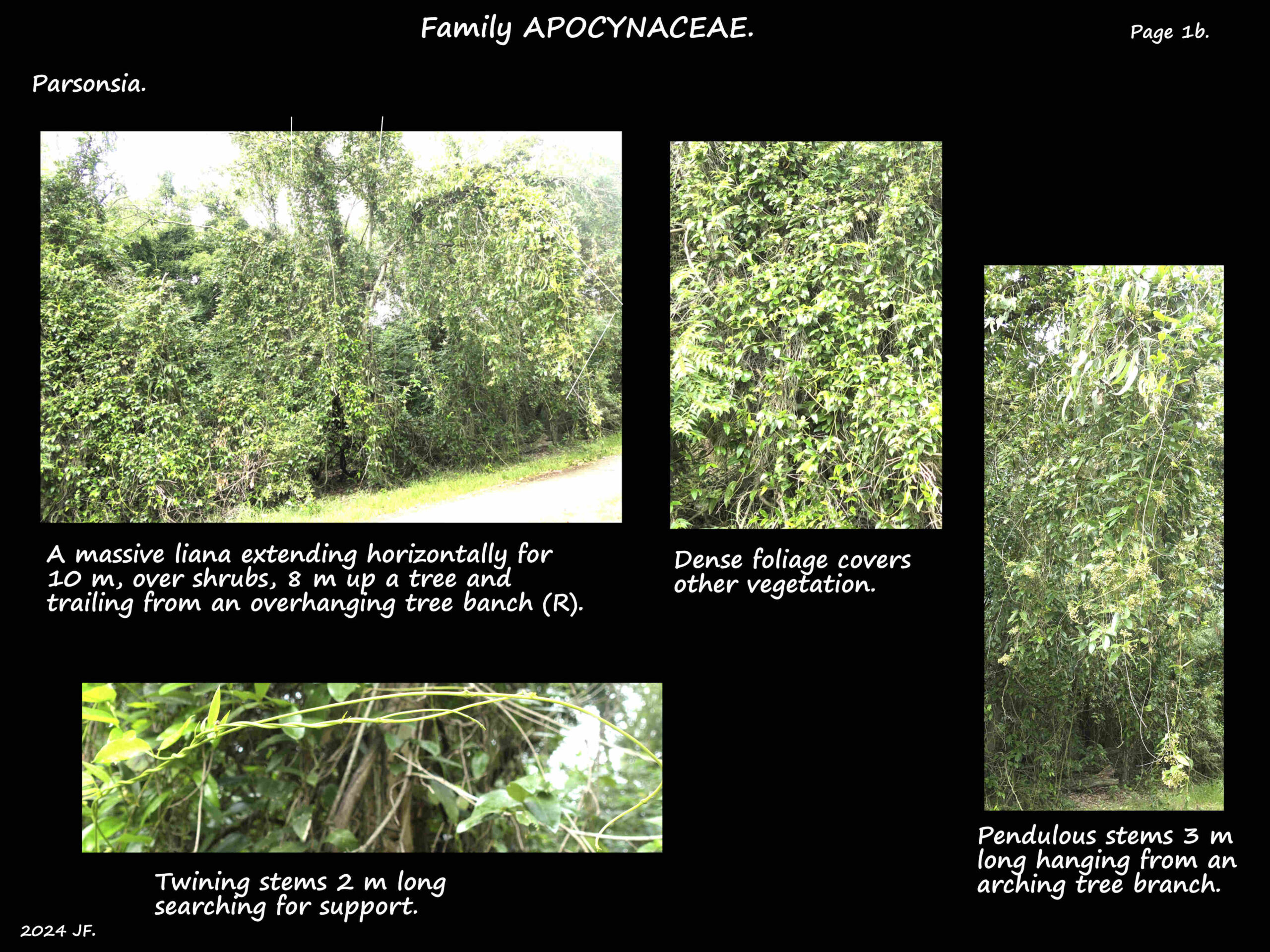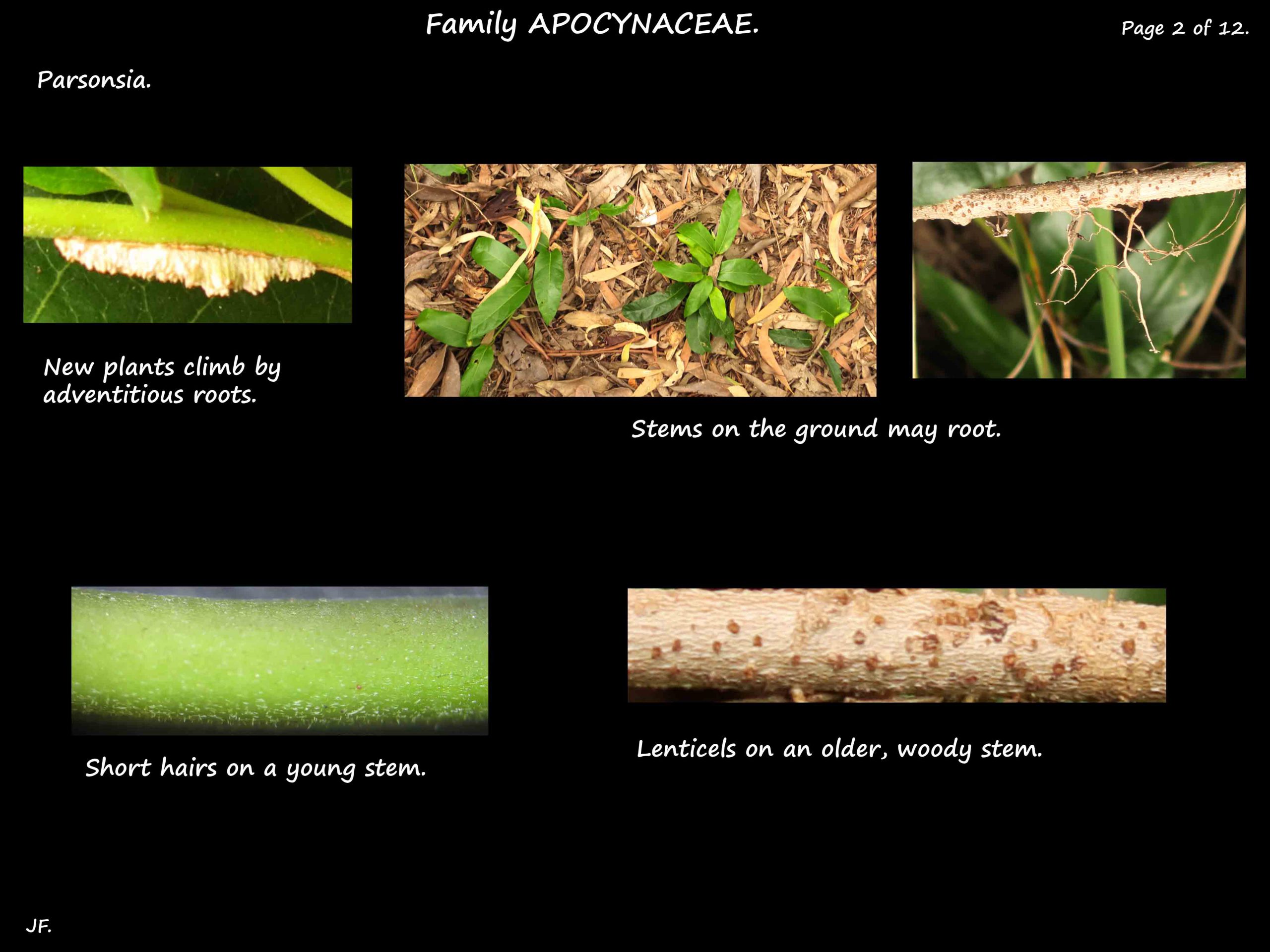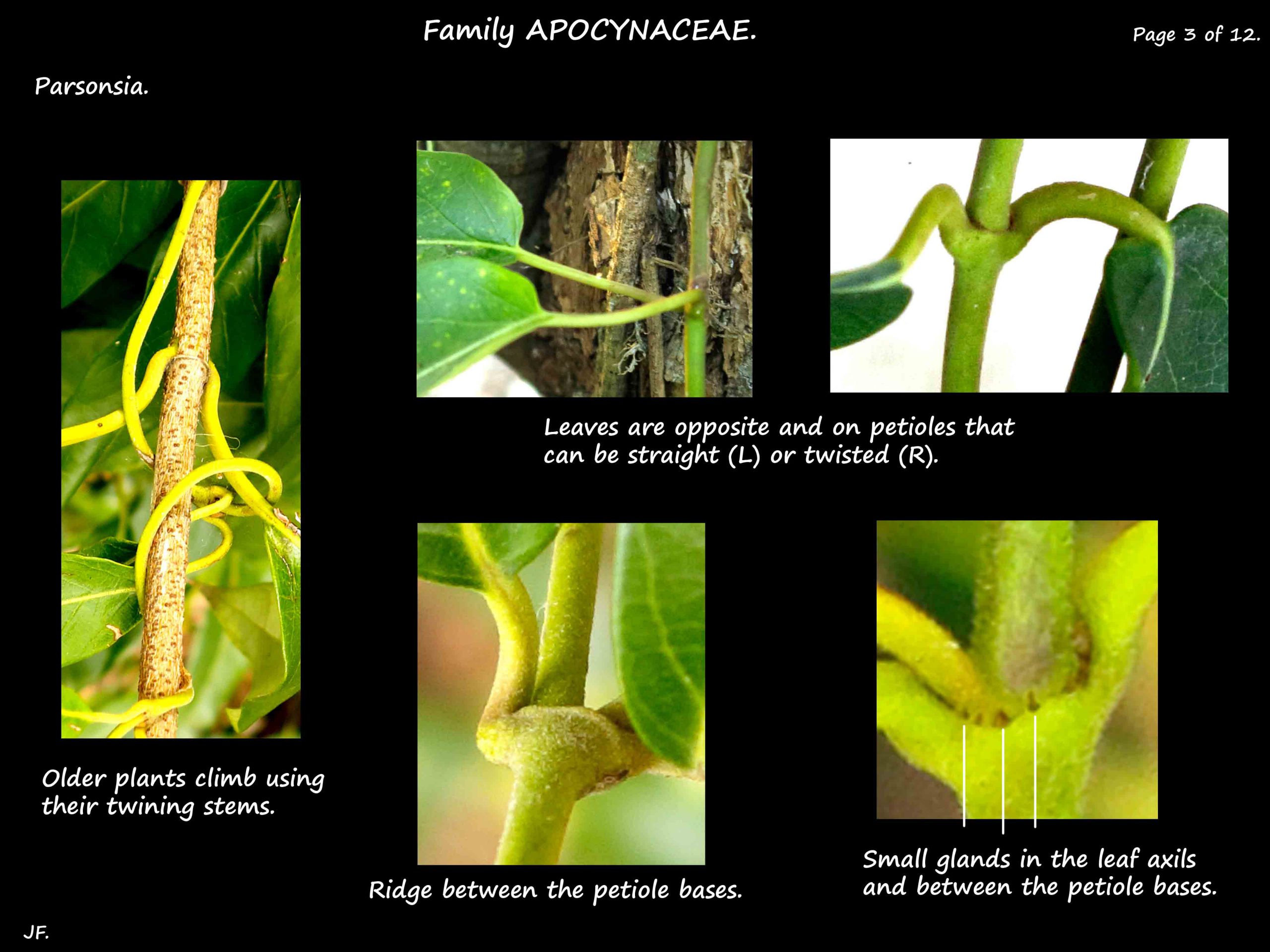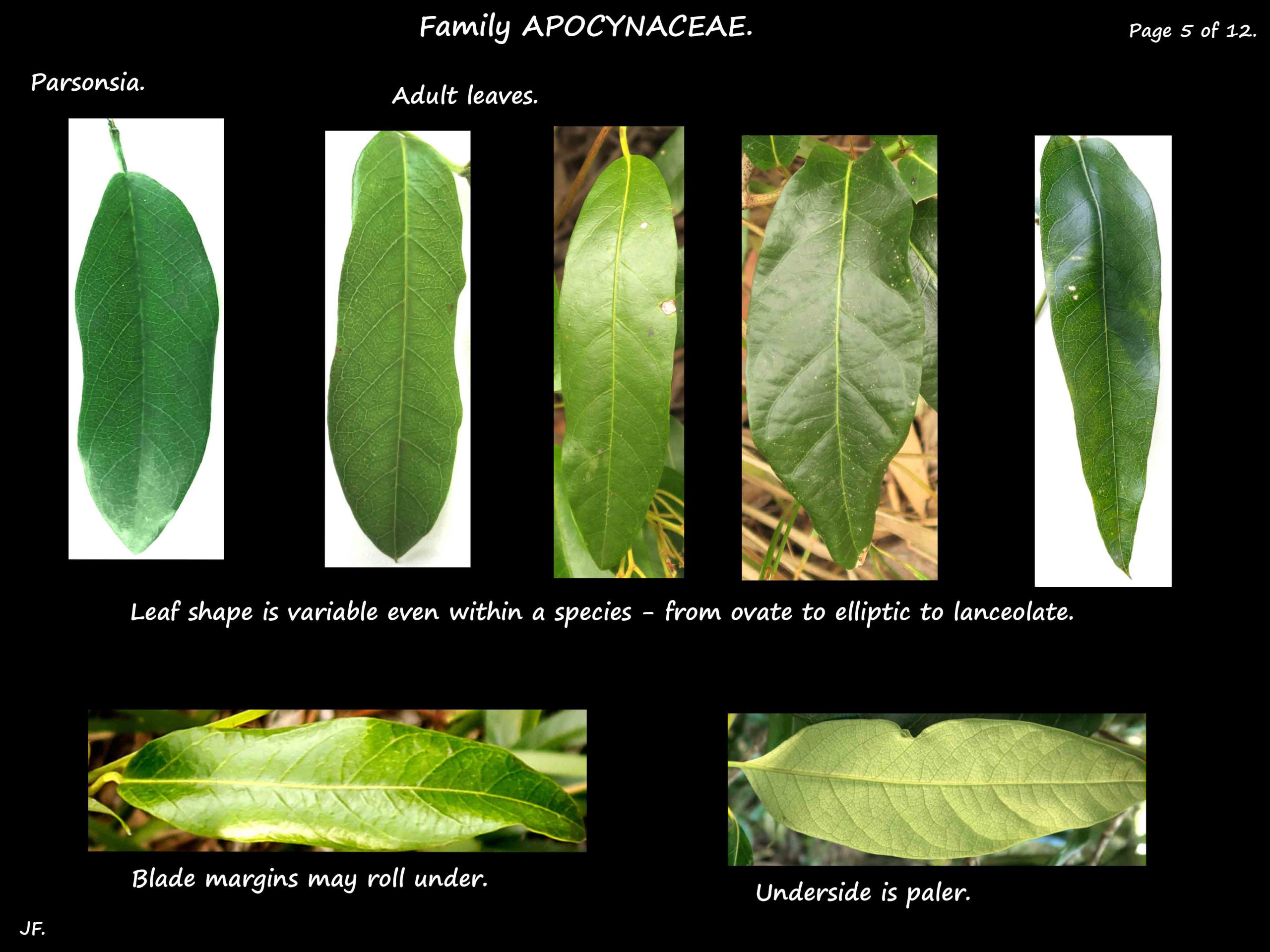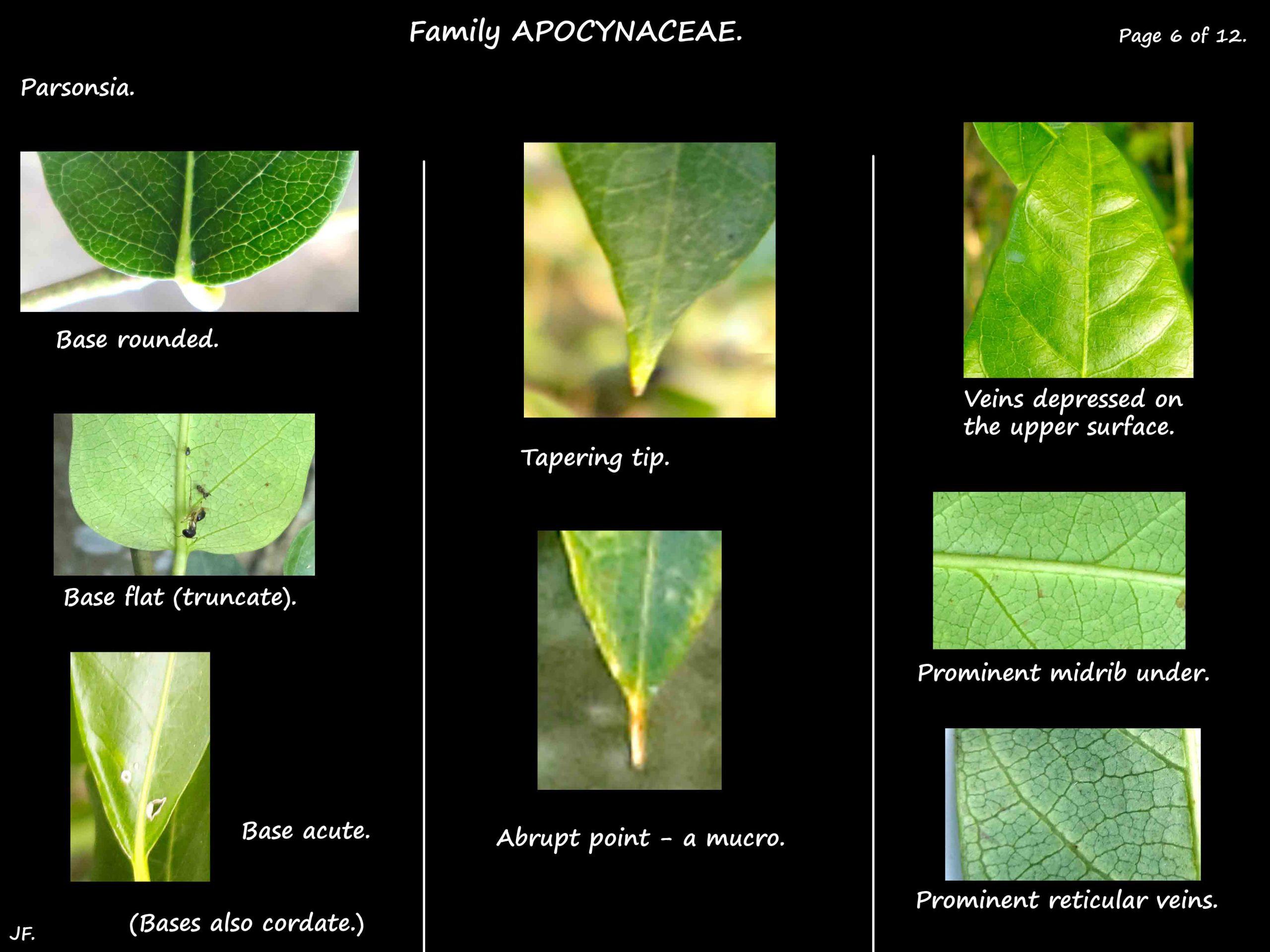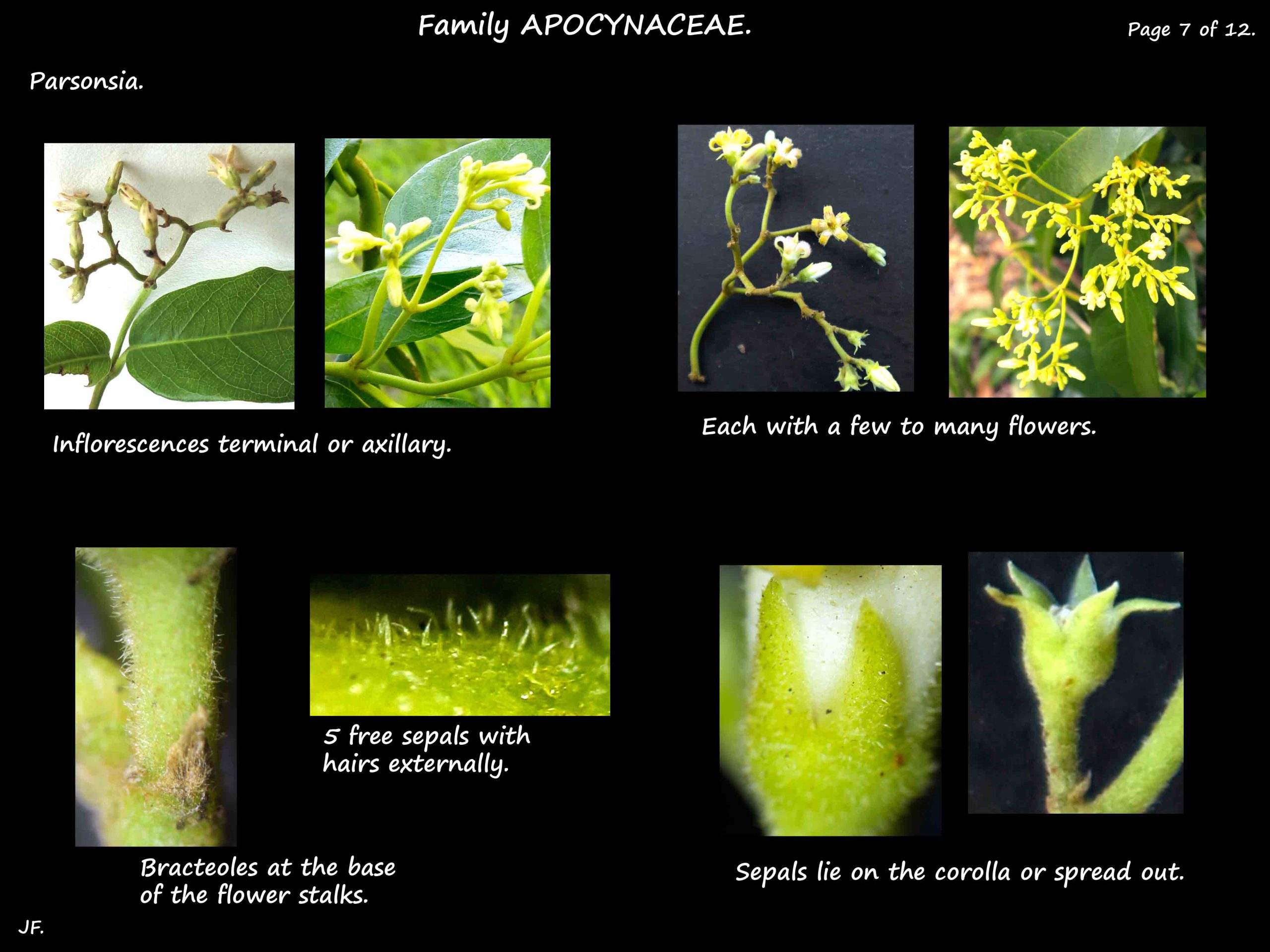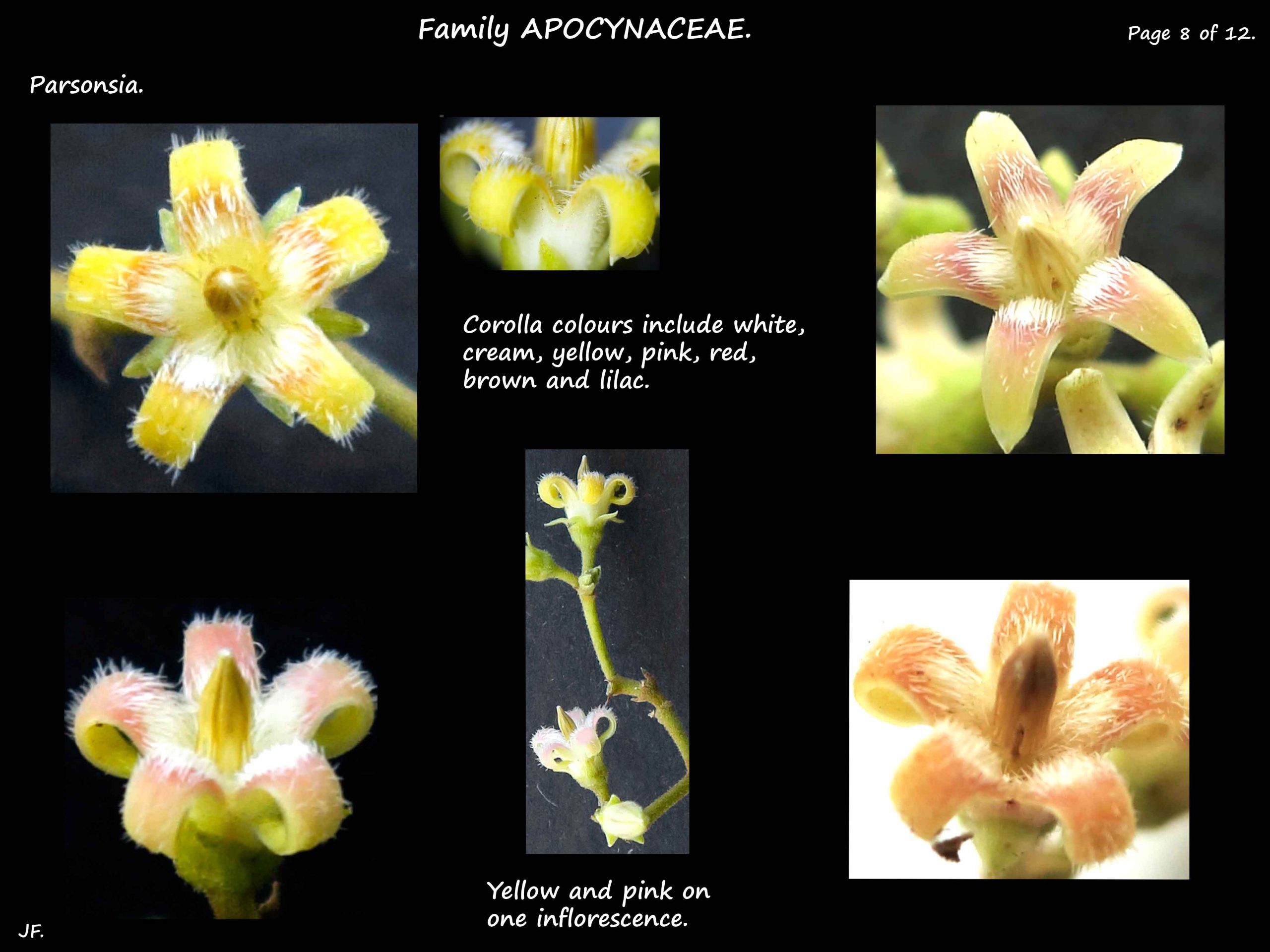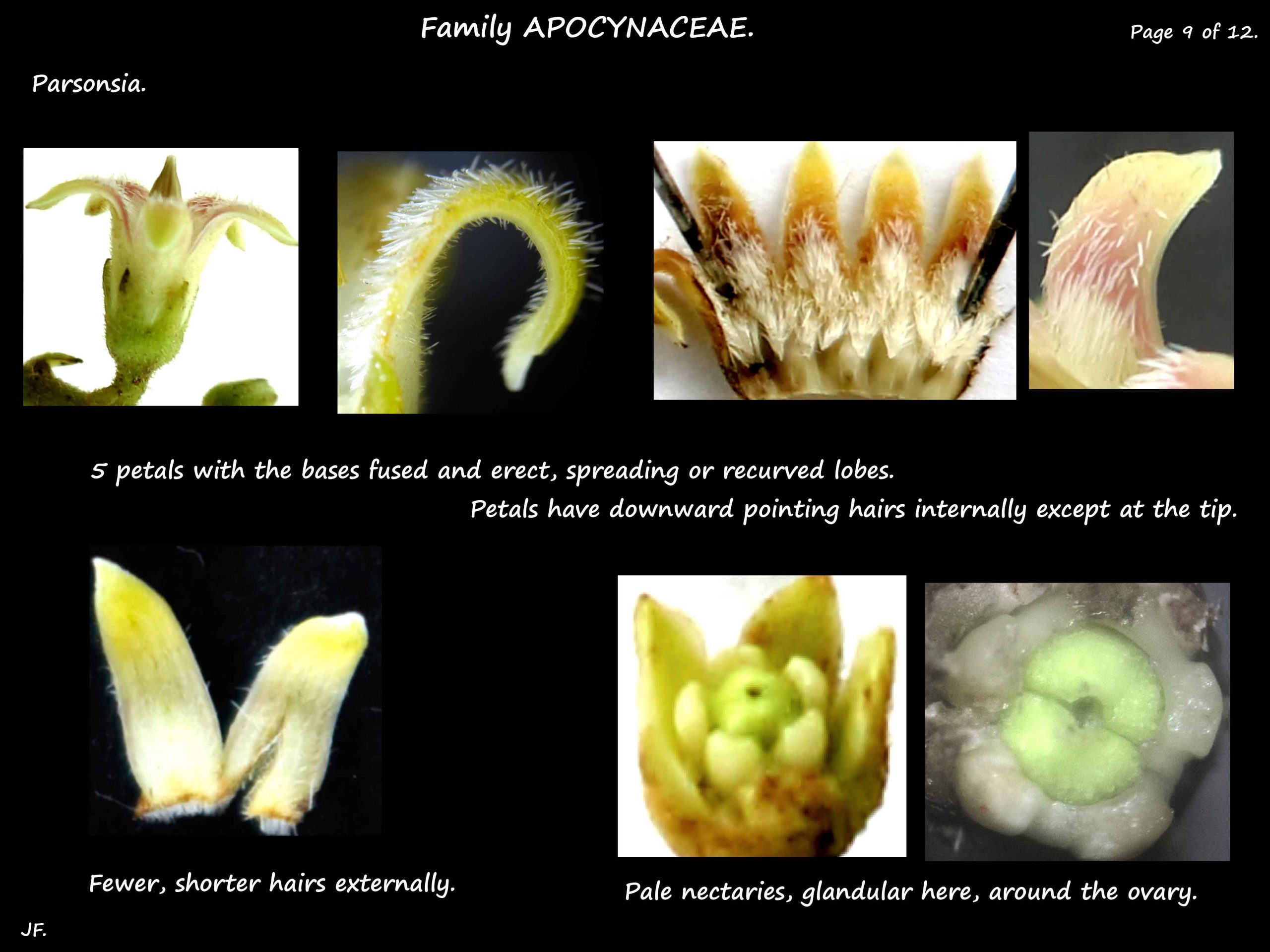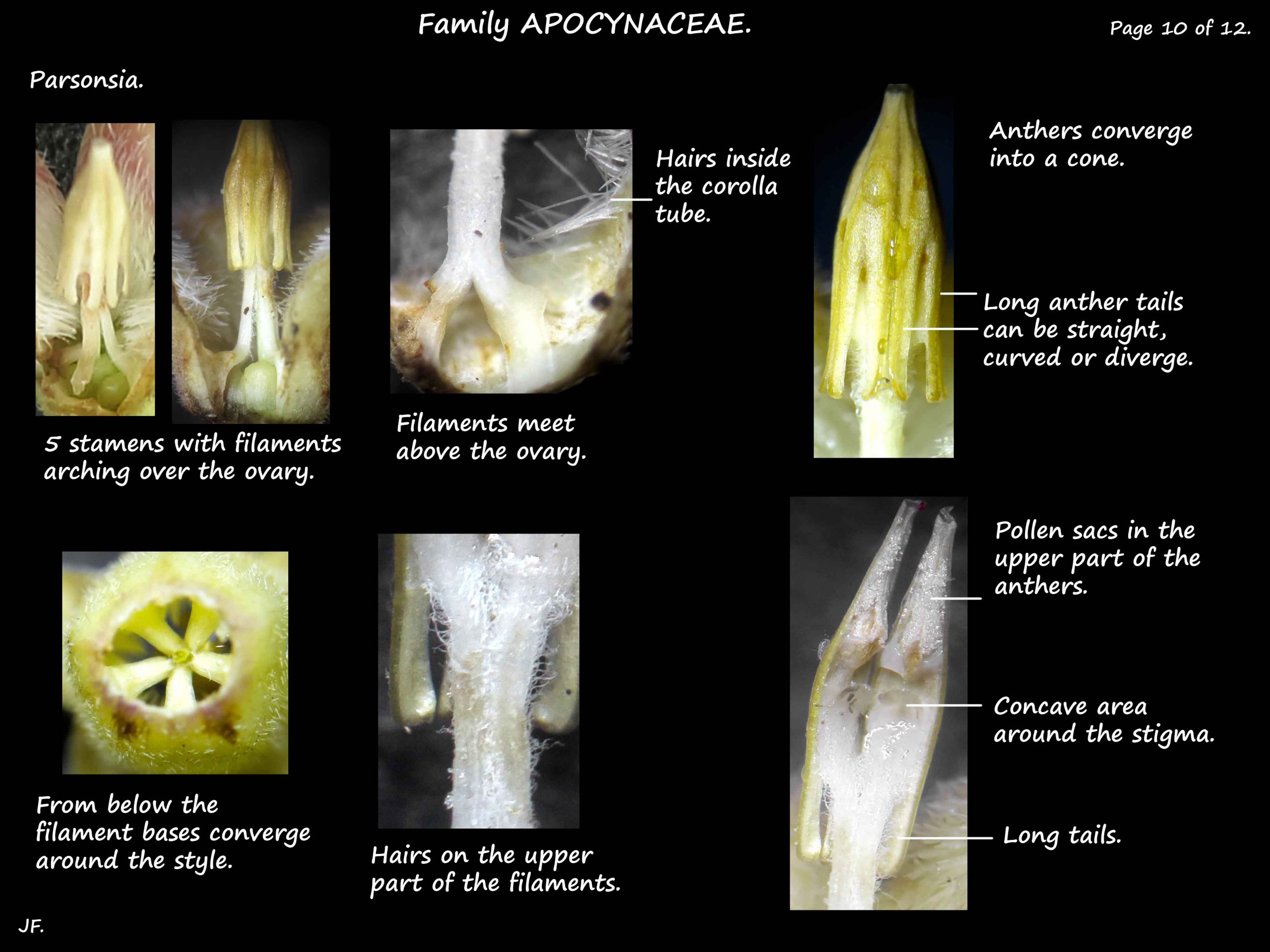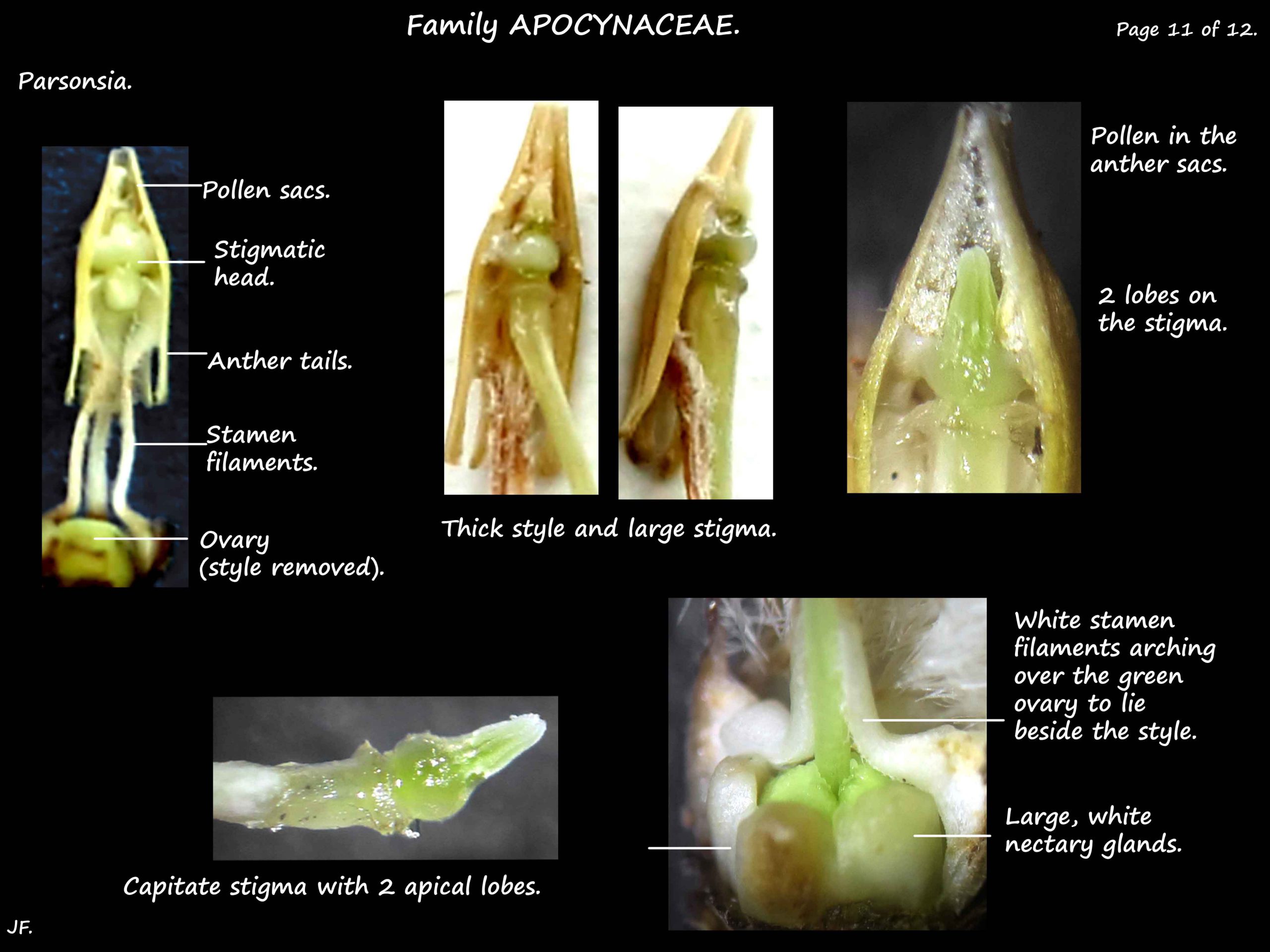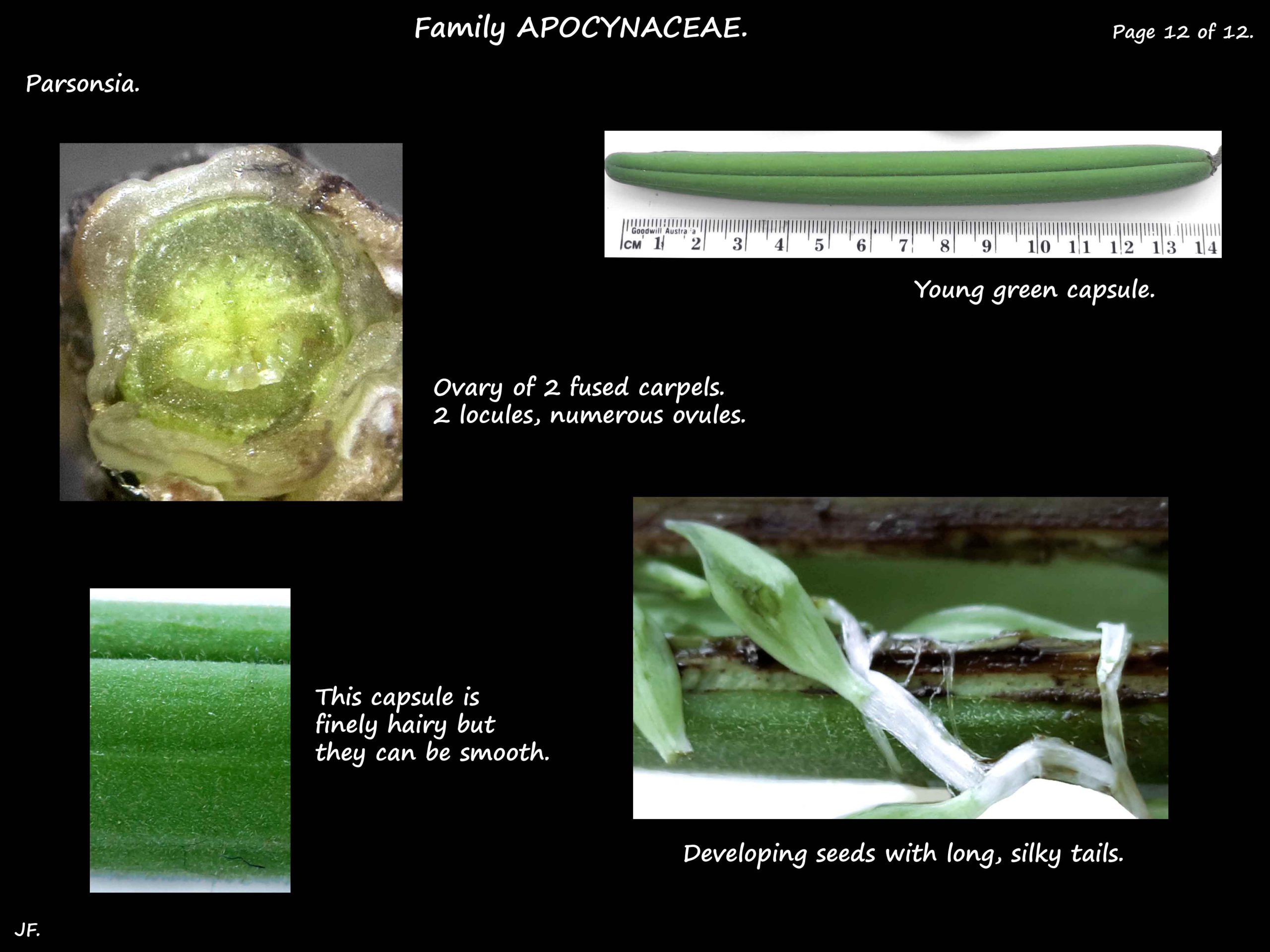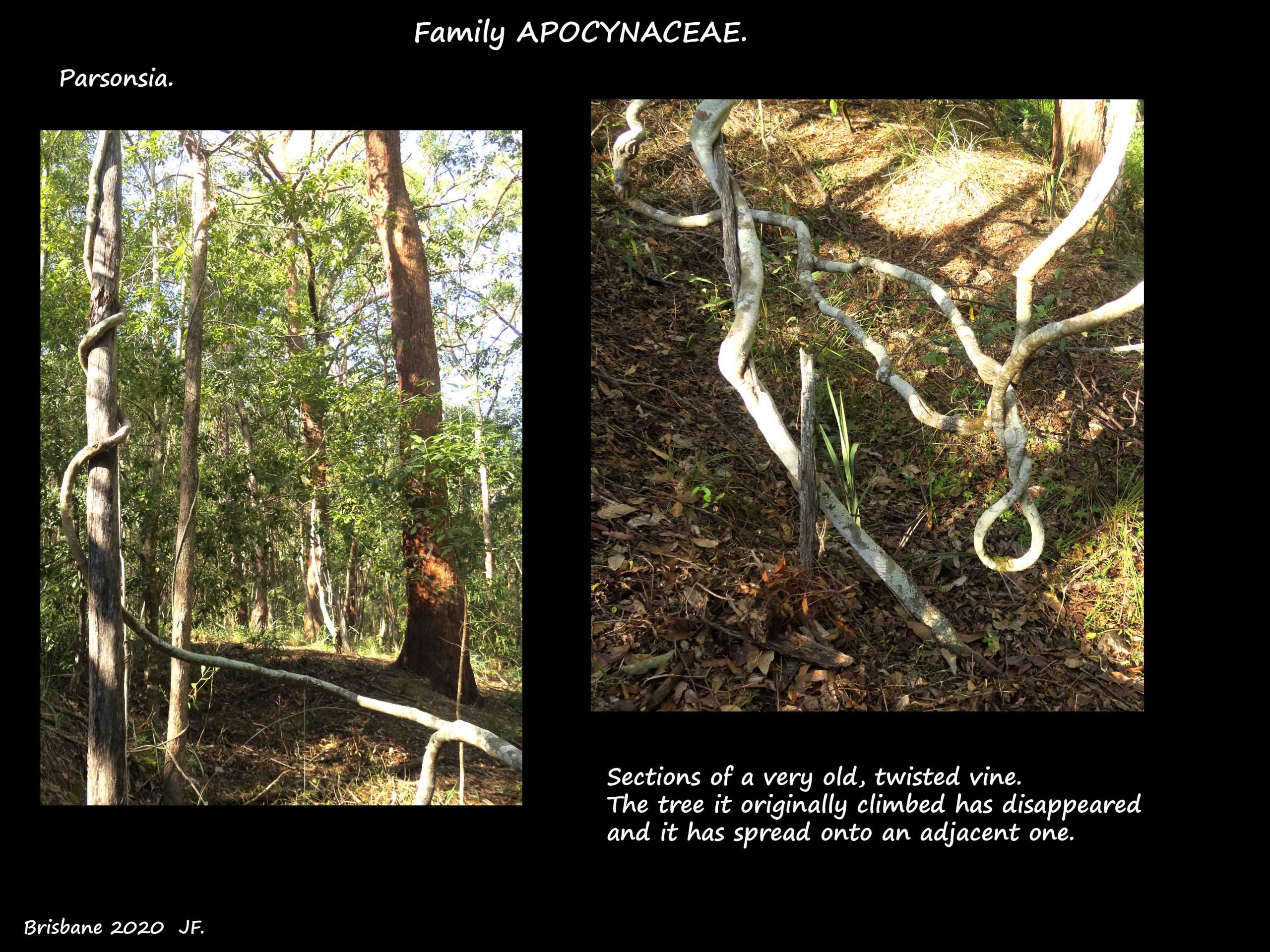Parsonsia – Silkpods.
Family Apocynaceae > Subfamily Apocynoideae > Tribe Echiteae.
Many are known as silkpods with descriptive terms such as Rough, Smooth, Slender,
Broad-leaved, Black, Green, Crisped and Hairy. Other names are Monkey vine or Monkey rope.
Australia has 35 (Mabberley) species including 16 in S. E. Queensland.
Below are some features of the genus, mainly of those species seen in Queensland.
Lianas (woody vines) from 4 to 30 m high climbing by twining stems.
Stems have a clear to pale yellow sap, rarely white latex.
Older stems may have corky outgrowths and/or lenticels (small nodules).
Stems on the ground occasionally root.
The leaves are opposite and on petioles.
In some species the juvenile and adult leaves are different.
Juvenile leaves.
At this stage plants climb by using adventitious roots rather than twining.
The soft herbaceous leaves can be linear, ovate or with a 2-lobed base.
From 1 to 5 cm long they are sometimes purplish underneath, and may have fine hairs.
Adult leaves.
Petioles, from a few mms up to 5 cm long, may be hairy.
Between the petiole bases are narrowly triangular glands under 0.5 mm long.
The blades can be dull or shiny and soft or leathery.
They are green, yellow or dark green above.
The lower surface may be green, whitish or grey-green.
The shape varies between species and sometimes markedly within a species.
They range from linear, to lanceolate, elliptic or ovate.
The length varies from 7 to 24 cm and the width from 1 to 9 (13) cm.
This is often recorded as a ratio e.g. 7 to 18 times as long as wide.
The base is commonly round or cordate but can be tapering or flattish.
Occasionally there are fine teeth near the base.
The tip is usually a tapering point but occasionally a mucro (abrupt short point).
The upper and/or lower surface may be smooth or have pale or brown hairs.
The blade margin is occasionally curved under.
Venation is pinnate with 5 to 14 pairs of lateral veins.
The veins may be distinct or indistinct.
Inflorescences are terminal or axillary, branched clusters of a few to many flowers.
The inflorescence stems (peduncles) are from 0.2 to 13 cm long and smooth or hairy.
The individual flower stems (pedicels) are 0.5 to 12 mm long and smooth or hairy.
Flower parts are in 5’s (a few species in 4’s).
Commonly white, cream, pale yellow or greenish some have brown, pink, red or lilac tints.
The calyx lobes are separate and lie flat against the corolla, spread out or curve back.
From 1 to 3 mm long, they can be ovate to lanceolate and are usually hairy outside.
The bases of the thick petals are fused into a tube from 1 to 3 mm long.
Commonly narrowly cylindrical it is occasionally inflated and roundish.
Internally the tube usually has hairs at the top and/or bottom or over the whole length.
The lobes, 1 to 8 mm long, can be linear or ovate to lanceolate.
They can be erect, widely spreading, bent inwards or curved backwards to various degrees.
They can be smooth but commonly have hairs inside and sometimes externally.
Rarely there is a corona of 5 tiny fleshy lobes at the top of the tube.
The anther filaments, 0.4 to 5 mm long, can be smooth or hairy.
They can be straight or slightly to very twisted into a spiral.
The bases are free but they fuse higher up.
The anthers converge to form a cone 2 to 4 mm long around the stigma.
The cone may lie totally within the corolla or extend partly or completely past it.
It can be smooth or have some hairs.
At the top of the anthers are the 2 sacs or theca that produce the pollen.
Each has a long downward extension or tail that can be straight or diverge to various degrees.
The anthers are adherent (stuck but not fused) to each other and the style head.
They are hard to separate but can be without damage.
The mostly superior ovary has 2 fused carpels with 2 locules.
The styles and stigmas are fused and the enlarged style head is adherent to the anthers.
At the base of the ovary are the nectaries – as a ring or 5 discrete lobes 1.3 mm high.
They can be wide or narrow and the top round, flat or 1 to 4 lobed.
The fruit are woody or semi-woody capsules from 5 to 23 cm long.
They are cylindrical, ovoid or fusiform and smooth or finely hairy, sometimes velvety.
The numerous seeds about 9 mm long, have silky white hairs 1.5 to 3 cm long at one end.
J.F.

